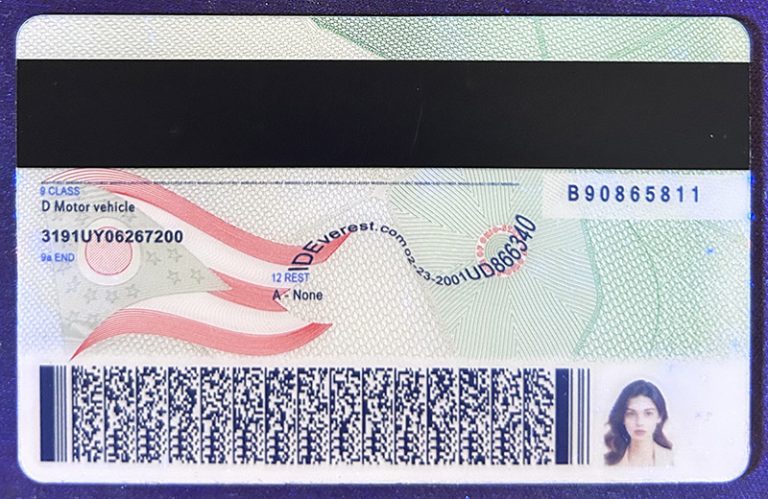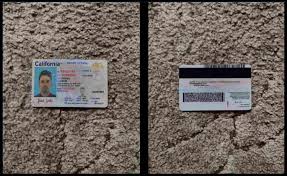The Digital Revolution of Scannable Driver Licenses in the United States: Leading the Way to a More Convenient, Secure, and Socially Inclusive Future
The Digital Revolution of Scannable Driver Licenses in the United States: Leading the Way to a More Convenient, Secure, and Socially Inclusive Future
The evolution of driver licenses in the United States bears witness to the country’s pursuit of innovation and progress. Today, we are at the cusp of a digital revolution, and the introduction of scannable driver licenses has become a key milestone, reshaping the landscape of identity verification, security, and social interaction. This article delves into the multifaceted impact of these advanced ID documents, such as the scannable Texas fake ID, New York fake ID, or Ohio fake ID; exploring their cultural significance, technological advancements, economic benefits, and the challenges of widespread adoption.












Technological Evolution and Its Impact
The advent of scannable driver licenses represents a major leap forward in identification technology. Embedded with RFID chips, QR codes, or barcodes, these smart IDs enable instant and secure data retrieval. No longer limited to physical examinations, law enforcement officials, border control agents, and retailers can now quickly verify an individual’s identity, streamlining processes and increasing efficiency.
The integration of digital technology into driver licenses has far-reaching implications for security. By combining tamper-proof features and encrypted data storage, these ID documents reduce the risk of counterfeiting and fraud, preventing identity theft and other criminal activities. Additionally, real-time data sharing capabilities between law enforcement agencies can help improve response times and conduct more effective investigations, thereby enhancing public safety.
Cultural Resonance and Social Dynamics
Beyond their technological prowess, scannable driver licenses have deep cultural significance. In the United States, obtaining a driver license is a rite of passage, symbolizing independence, maturity, and social integration. As this document continues to evolve and incorporate cutting-edge technology, it remains an iconic representation of personal growth and social progress.
The seamless integration of digital technology with driver licenses also promotes greater social inclusion. With fast and reliable identity verification, individuals can more easily access basic services such as banking, education, and employment. This promotes economic mobility and reduces barriers to opportunity, promoting a more equitable society.
Economic Catalyst and Growth Opportunity
From an economic perspective, scannable driver licenses are a powerful catalyst for growth and development. The efficient flow of information enabled by these ID documents streamlines transactions, reduces costs, and enhances the customer experience across industries. For businesses, faster identity checks can lead to faster service delivery, increased productivity, and ultimately greater profitability.
Additionally, the adoption of scannable driver licenses supports regulatory compliance and security initiatives. By monitoring and analyzing driver data in real time, government agencies can effectively enforce traffic regulations, prevent accidents, and mitigate their economic consequences. This not only safeguards the well-being of citizens, but also reduces the burden on public finances and insurance premiums, helping to enhance economic resilience.
Addressing Challenges and Ensuring Inclusion
While the benefits of scannable driver licenses are numerous, the challenges they bring must be addressed. In an increasingly digital world, data privacy and security issues are critical. The increased risk of data breaches and misuse requires strong cybersecurity measures, including encryption, access controls, and regular security audits.
In addition, efforts must be made to mitigate the risks of digital exclusion. To ensure that all citizens can benefit from the advances made possible by scannable driver licenses, public education campaigns and technology accessibility programs are essential. This includes providing training and support to those who may lack the necessary digital skills or resources, ensuring that no one is left behind in the digital age.
Conclusion
The digital revolution of scannable driver licenses in the United States represents a pivotal moment in American history. By integrating cutting-edge technology into fundamental aspects of daily life, these advanced ID documents have transformed identity authentication, security, and social interactions. From improving efficiency and convenience to promoting economic growth and social inclusion, the benefits of scannable driver licenses are far-reaching.
As we navigate this new frontier, we must strike a balance between leveraging the benefits of digital technology and addressing its challenges. By implementing strong cybersecurity measures, reducing the risks of digital exclusion, and seizing the opportunities presented by scannable driver licenses, we can ensure that this technological advancement continues to embody the spirit of individual freedom, social progress, and economic prosperity that has long defined the American experience.
 MississippiDLFake ID
MississippiDLFake ID
 IndianaFake ID
IndianaFake ID
 MassachusettsFake ID
MassachusettsFake ID
 MichiganFake ID
MichiganFake ID